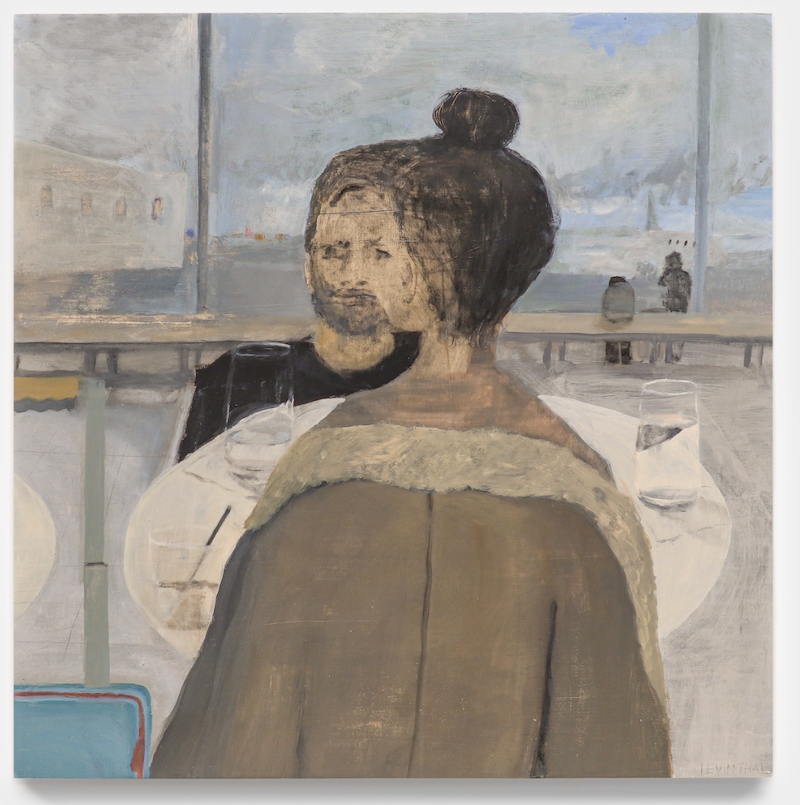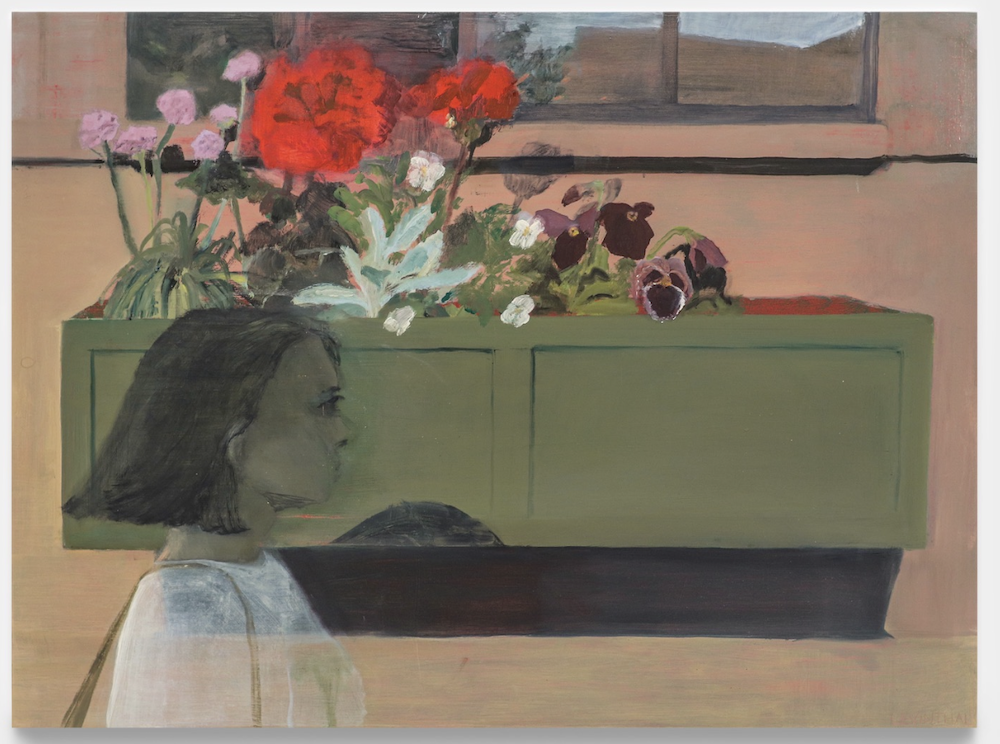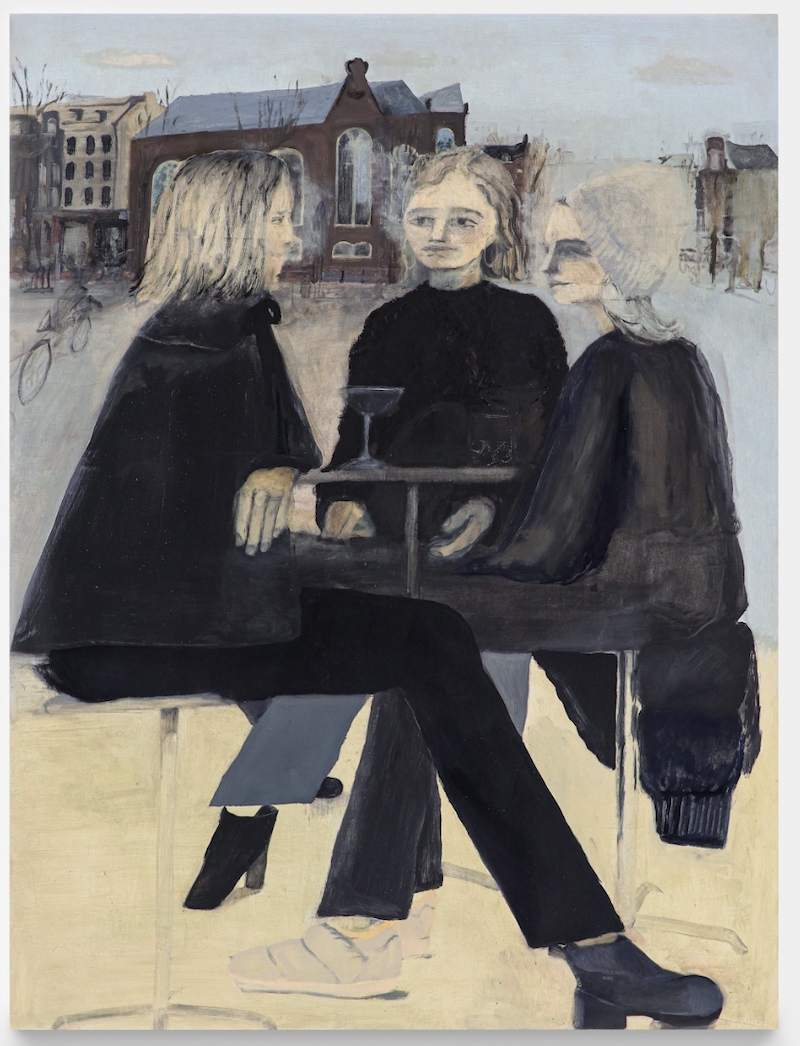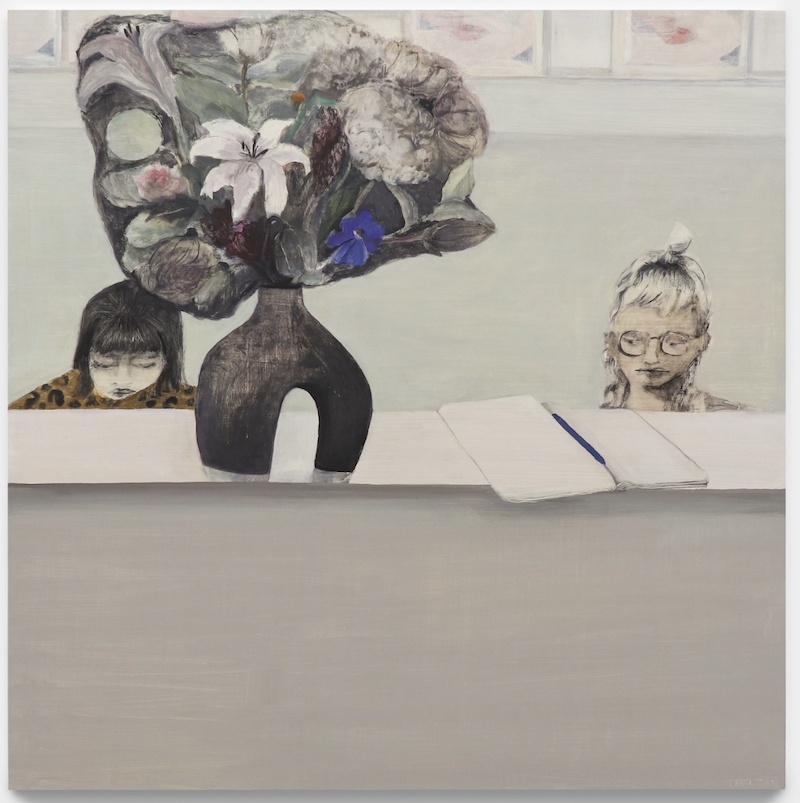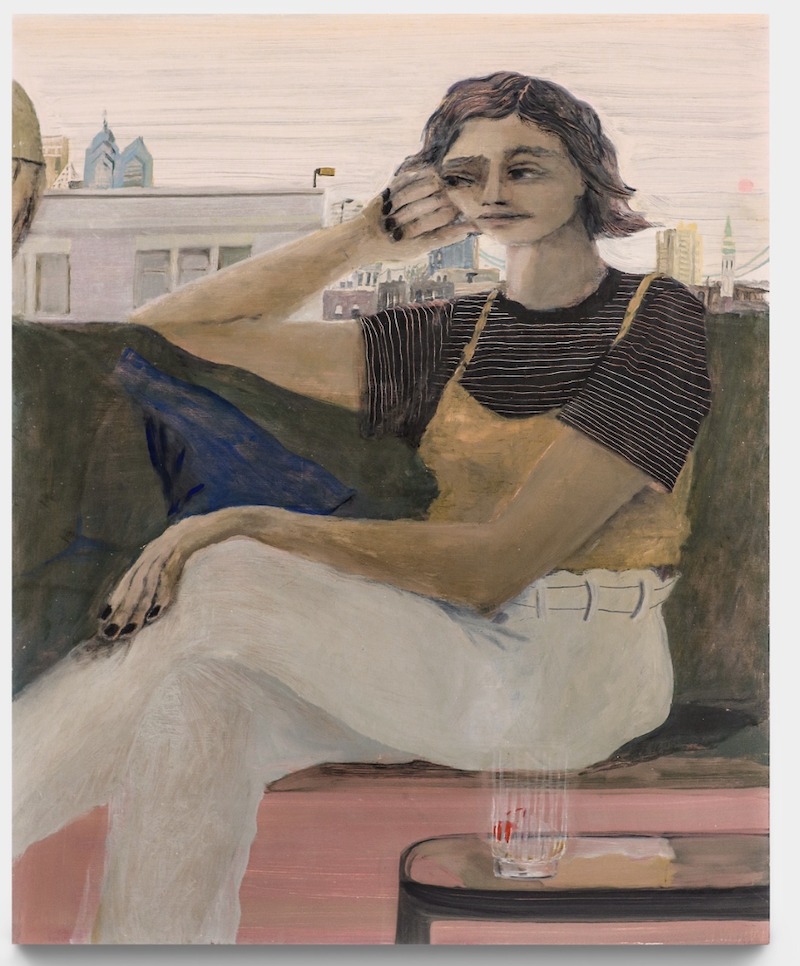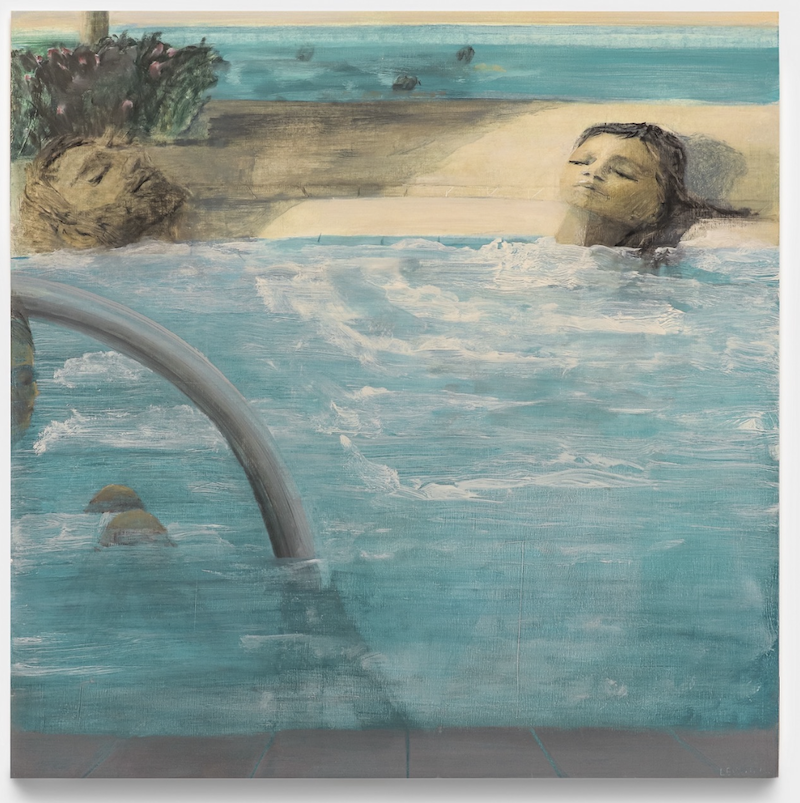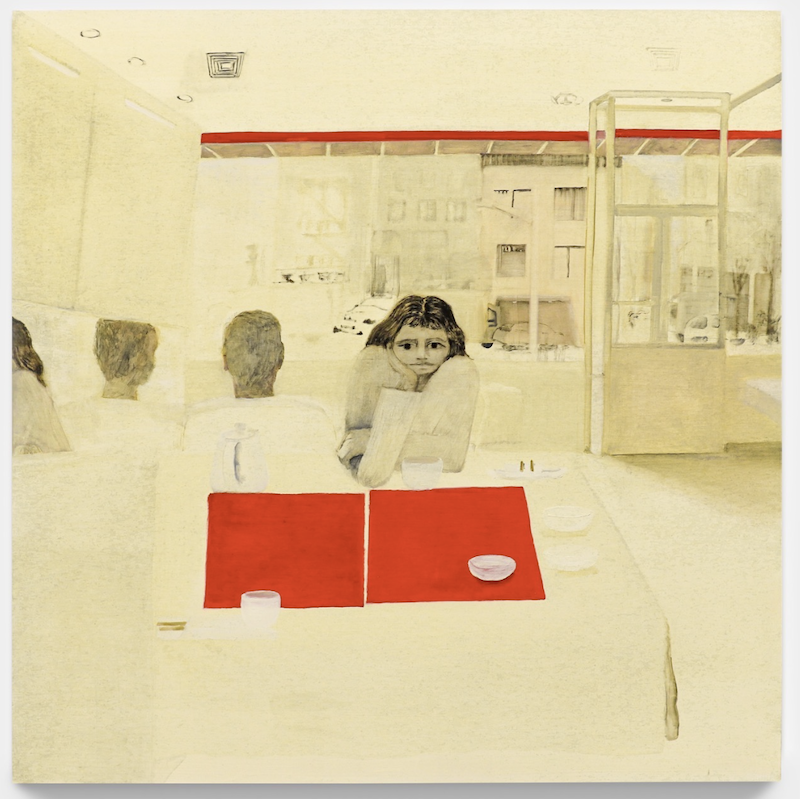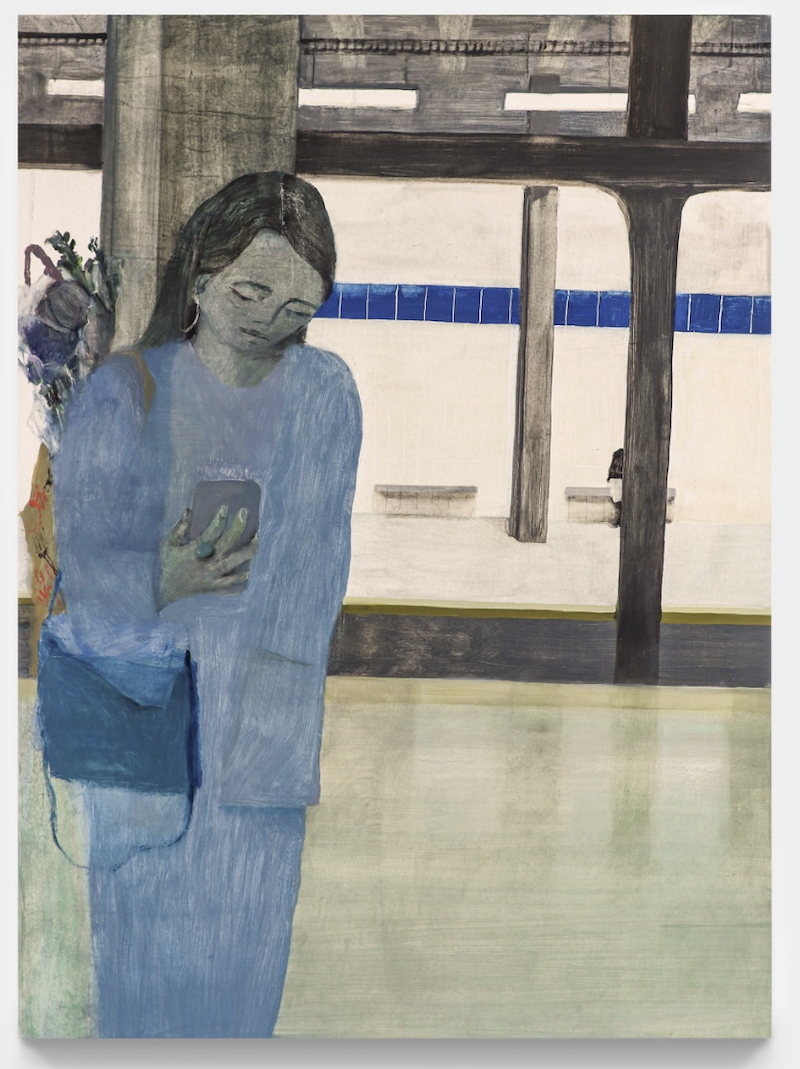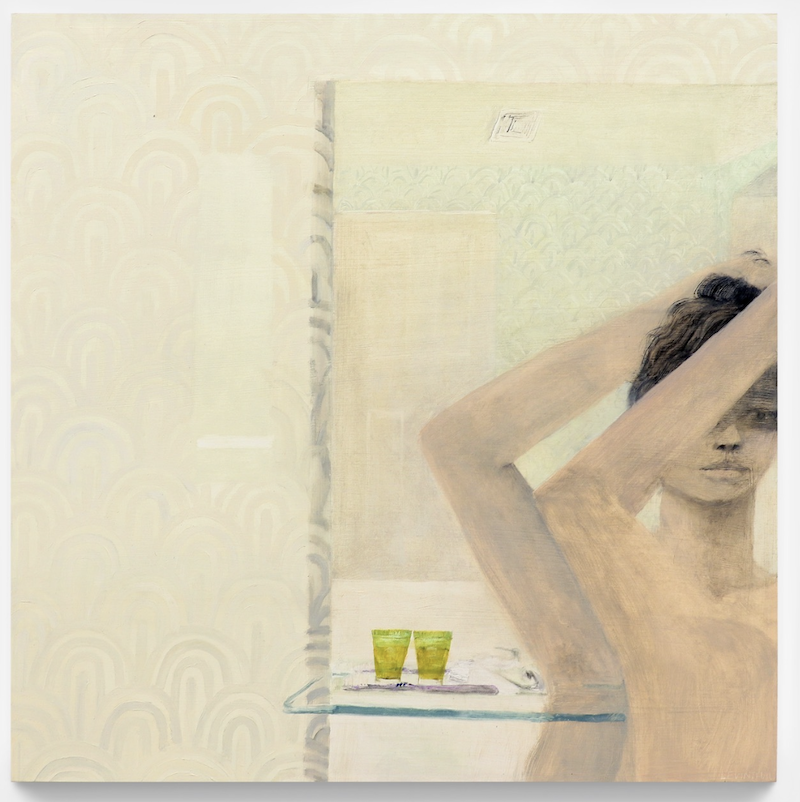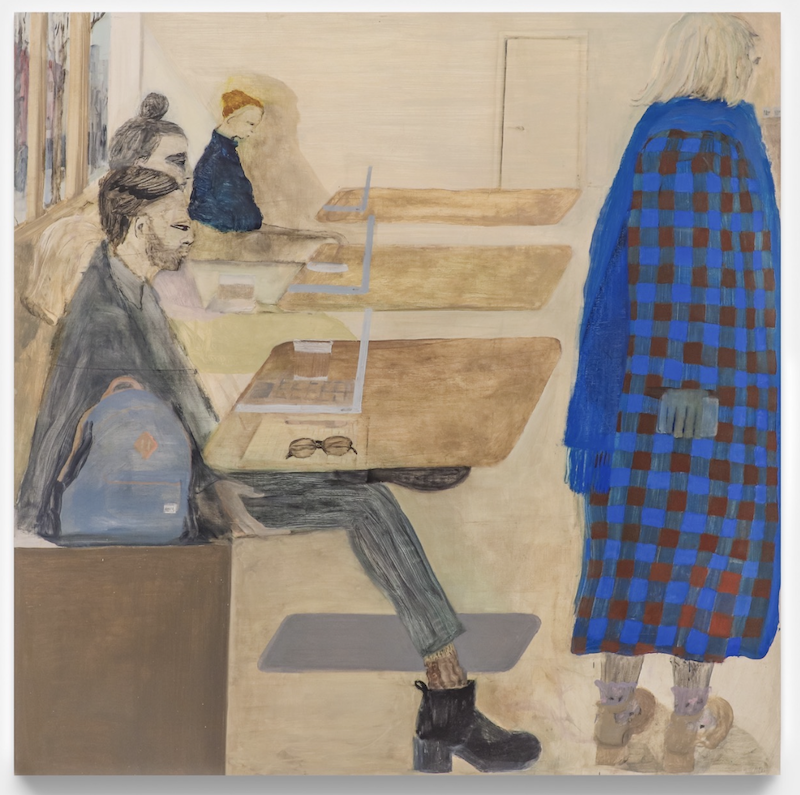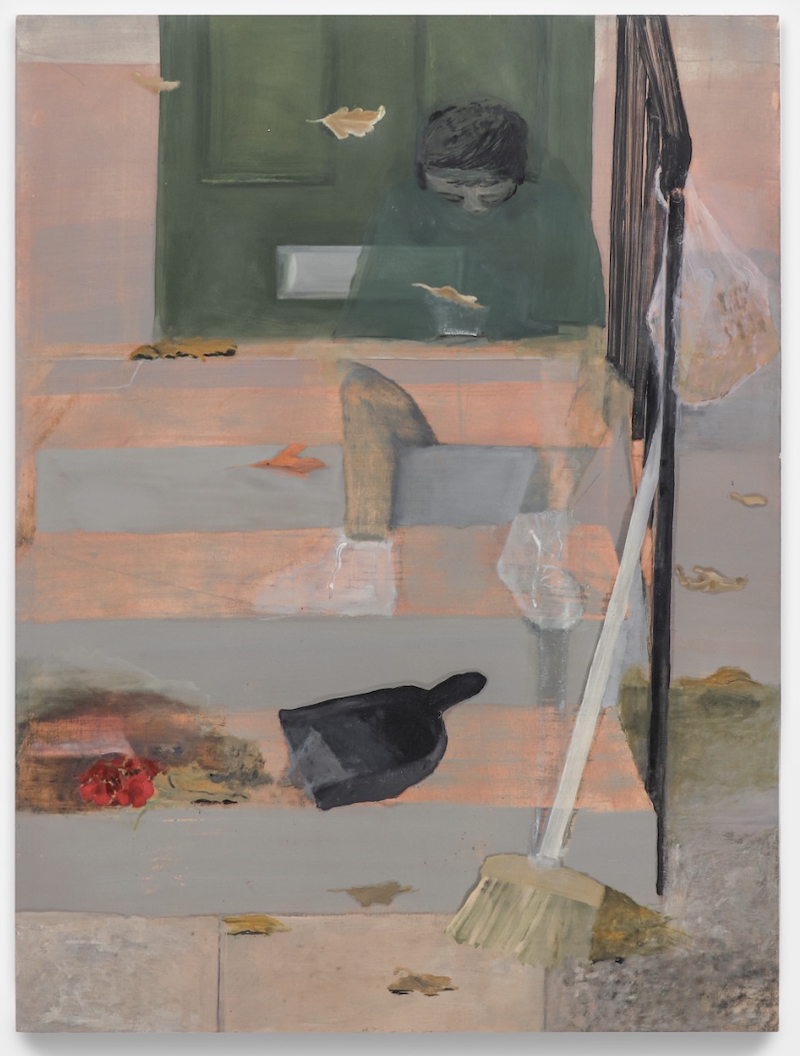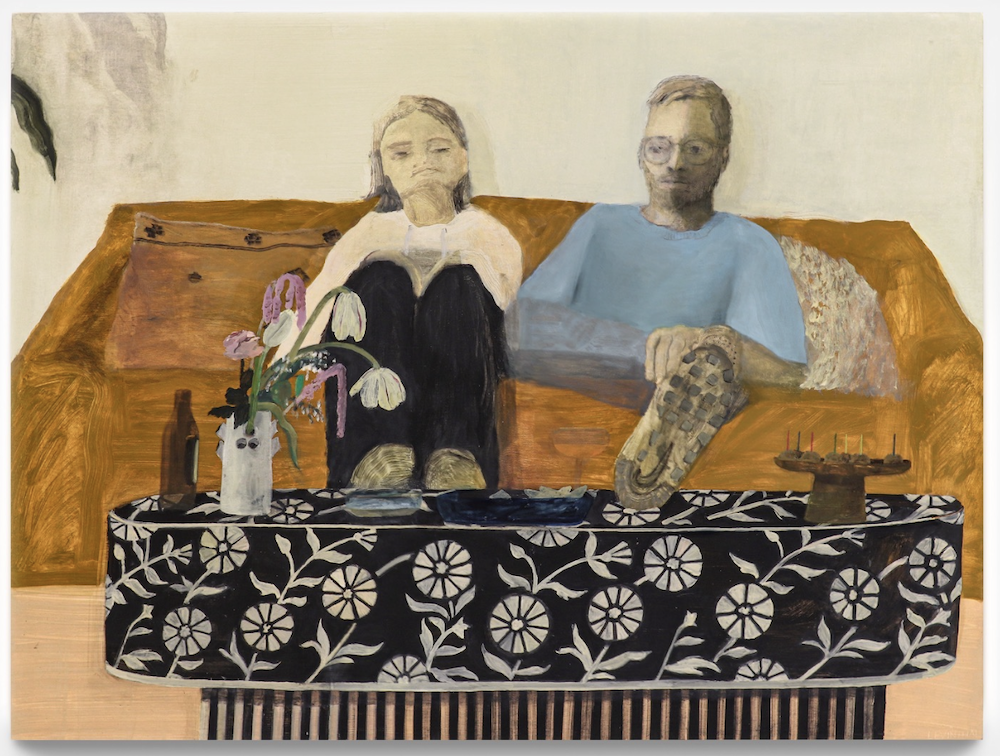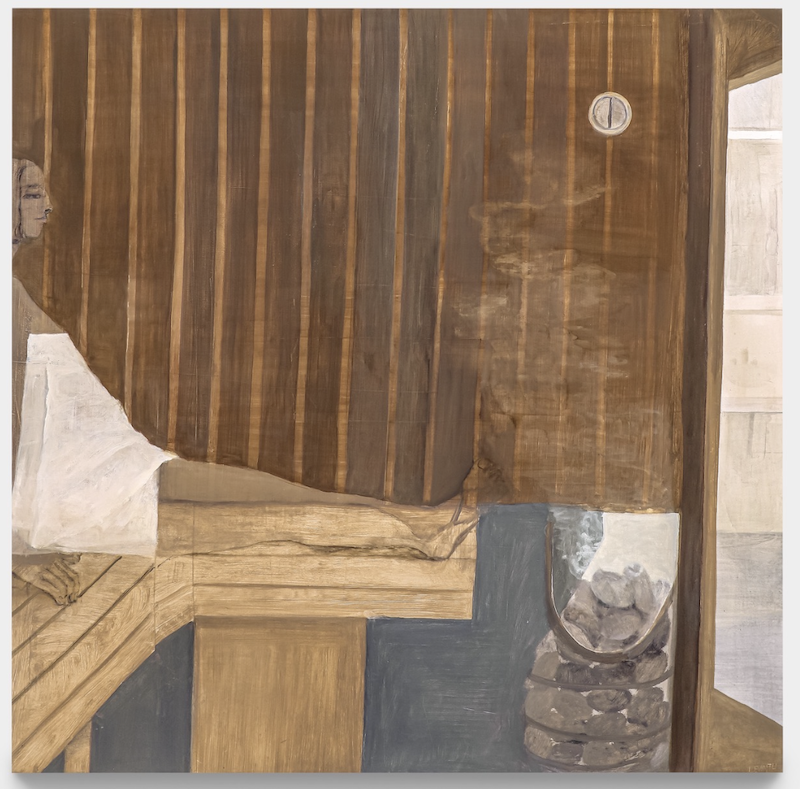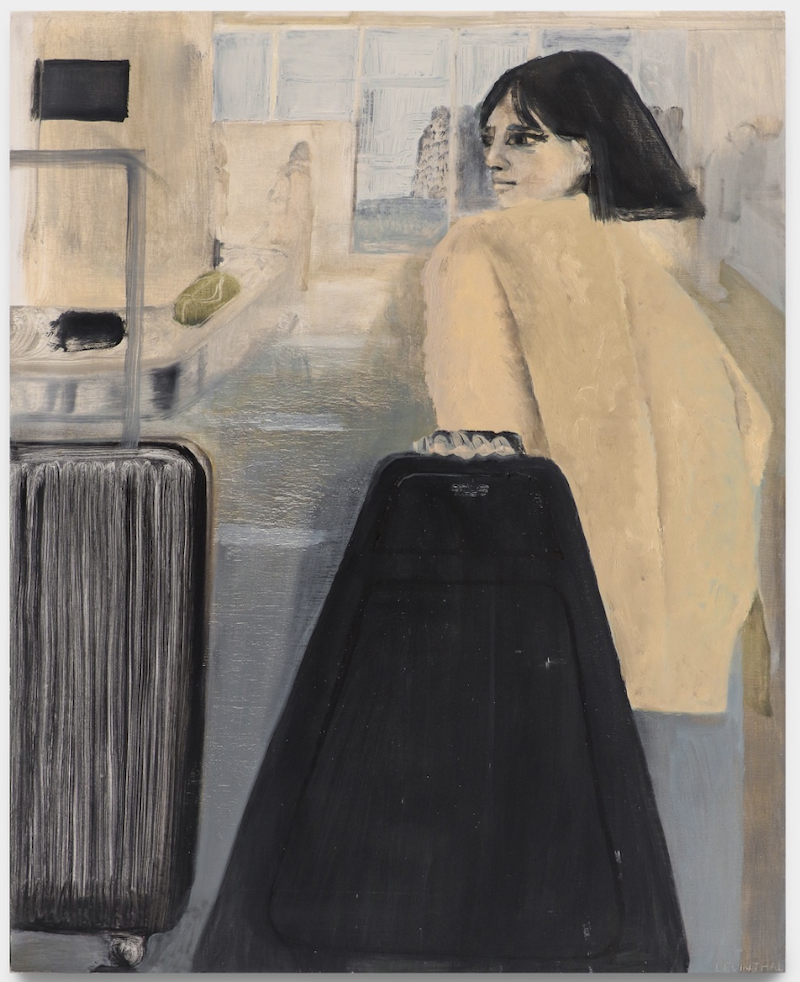M+B is pleased to present Tourist, an exhibition of new works by Aubrey Levinthal. This is the artist’s second solo show with the gallery. The exhibition will run through October 7, 2023,
Estrangement is rarely an exceptional feeling. The emotional core of interior life can hardly be put to the tune of a saccharine love song, nor can it truly be captured in the grandiosity of expressionistic excess—rather, it so often resides in the hum of those accumulated, mundane experiences that populate the space between such emotive extremes, the repetition-with-variation of a daily life stacking upon itself and taking the form of something bizarrely delightful. Aubrey Levinthal’s paintings take the strangeness of such every-day encounters as their muse, cataloging the soft melancholy of a life in transit with a diaristic sense of levity. Lightly abstracted figures populate fields of earthy grays and muted blues and pinks, shuffling across airport terminals and resting listlessly in dim sum booths. In an almost paradoxical fashion, Levinthal employs restraint as a tool for arresting rich complexity. She deliberately whittles away at charged dynamism and linear storytelling until only the formal structure of the scene itself remains, forcing the space of each painting to turn in on itself with a sense of contemplative surprise. In the absence of heavy-handed action or emotion, the viewer is left to sit with the charming discomfort of a pure exchange of outward gazes, passing back and forth between both Levinthal’s figures and the viewer themself in a quietly kaleidoscopic ricochet of glances. At once both insider and outsider, Levinthal’s figures arrest the slippery interplay between the lonely voyeurism of the tourist and the studied absurdity of feeling like a stranger in one’s own home, collapsing any strict distinction between the two and exposing the mutable oddity of being at once both perceived and perceptive of others in public space.
While ostensibly figurative in nature, Levinthal’s paintings carry out their most intimate work on the level of form. Fine textures, shapes, and deliberately placed color blocks set the scene of each encounter, allowing human bodies to blend into the constructed landscape like pieces of psychological furniture. The black clad legs of café dwelling women wind together in a spiderlike expanse, refracting the stares of onlookers; small figures placed in saunas and hot tubs adopt an austere stillness, exacerbated by the comparative motion of the water and steam surrounding them. These scenes are impressionistically drawn from Levinthal’s daily observation of life as it unfurls around her—importantly, they are less so autobiographical narratives or evocations of a faulty memory than the accretion of plainly repetitive passages through airports, neighborhood coffee shops, and hotel mirrors, stacked impressions spooling out and congealing across each wood panel surface. Levinthal evacuates any sense of strict meaning or ownership over such memories, instead reducing them to formal exercises in what it means to play at reinventing both oneself and others while in public. Sly references to the spiritually charged tradition of classical painting are undercut by the inclusion of contemporary motifs like pink puffer jackets and paper-thin laptops, arresting a curious sense of timelessness. Levinthal’s exacting formalism gently links the sacred to the profane—if one end of a neighbor’s table bears an empty beer bottle, the other is counterbalanced by a plate of meatballs that appear to arc towards an uncanny, menorah-like posture. Each panel elevates a series of minor notes drawn from the slow passage of life to the level of a universally transmittable profundity, all the while refusing to indulge in any sense of sentimental or fussy grandeur.
If there is a narrative structure to be found in Levinthal’s paintings, it is one which plays out associatively between the works themselves. Often working on multiple surfaces at once, Levinthal allows certain themes to emerge through a sense of open, organic improvisation. Certain figures reject the viewers gaze while others knowingly court it, creating thick webs of juxtaposing inclusions and exclusions; a blue winter coat is mirrored both emotively in the matching blue of a hotel pool and structurally in the recurrence of a separate pink winter coat, and so on. Whereas Levinthal’s earlier work often turned its gaze inward toward the intimacy of domestic life, these paintings lurch out into the light of day, taking the distancing imposition of outward perception as their plaything. Transitory scenes prevail, cataloging a life spent flitting from the margins of neighborhood corners to the mainstage of international travel. Through it all, the strangeness of life-in-transition itself creeps into focus: the multiplicity of gazes, public forums, and competing classical and contemporary referents that populate Levinthal’s work set the stage for a delicate type of self-aware temporal reflection, as the distancing-through-familiarity effect of aging and a persistent curiosity for the trappings of youth culture are made to negotiate each other’s unfamiliar contours.
While sometimes melancholic, Levinthal’s paintings are by no means devoid of love. Distance finds its counterpart in yearning; comfort and mundanity are two sides of the same coin. Levinthal’s refusal to make grand gestures is not a refusal of emotionality itself, but rather an expression of curiosity for those more robust, if also more restrained, experiences of pleasure that make up the ocean between each wave. Not unlike Frank O’Hara musing on the unequivocal joy of sharing a Coke with a loved one, Levinthal explores the complex charm of the commonplace gaze—the passing glance which has traced the same face a thousand times, and which takes strange delight in knowing it will trace the same face again a thousand more.

